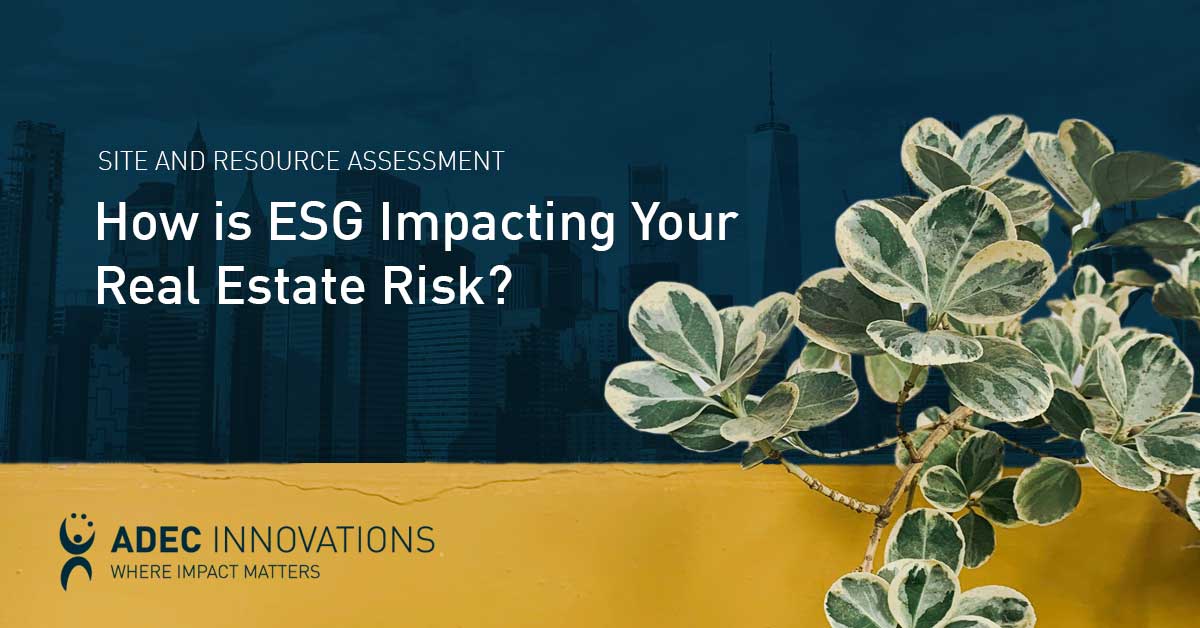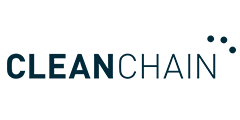But with time, people began to realize the importance of reducing the harmful effects of business practices. The property risk and site assessment industry were also impacted by this global awakening.
Investors and lenders started to scrutinize companies they invested in for their environmental, social and governance (ESG) policies and procedures. They were particularly interested in companies that could manage ESG-related risks effectively and protect their investments long-term. This trend forced companies to develop effective governing practices to accurately monitor and report their ESG progress and methods.
Now companies have to adapt to new technological tools, such as Prop-tech (Property Technology), to streamline data gathering and reporting. This allows organizations to collect relevant information efficiently, track performance and report their progress in a more comprehensive and transparent manner.
As the world continues its ESG improvement journey, businesses must keep up to remain relevant and sustainable. Companies that adapt to the new ESG landscape by implementing sustainable practices, adopting Prop-tech tools and providing verifiable evidence of their progress can expect to reap greater rewards. The real estate industry is also starting to focus more on ESG practices. This is because real estate investors and lenders are taking ESG policies into account when making decisions.
The “Environmental” of ESG
Risk is no longer restricted to financial or regulatory risk, rather it has become much broader and more encompassing. Real estate companies must now evaluate their properties to see how vulnerable they are to various environmental risks. This means creating and enforcing sustainability policies.
To evaluate environmental property vulnerabilities, real estate companies need to think about things like climate change and extreme weather events. Climate change can exacerbate physical and financial risks for real estate businesses. It puts pressure on natural resources, such as fresh water, and requires more frequent updates to infrastructure and buildings to keep up with worsening conditions. Extreme weather events that result from climate change can cause loss of life and millions in physical damage. In both cases, prevention is key.
In addition, sustainability initiatives are getting more attention from regulators. The Biden administration has launched a set of policies for states and local governments to make sure building performance standards are being followed – a means of reducing costs from damages as much as 11-fold for buildings that might otherwise suffer the consequences of extreme weather events. The European Union has also created new transparency laws, such as the Sustainable Finance Disclosure Regulation (SFDR), which requires companies to provide proof of their sustainability claims to protect investors from being misled.
On a positive note, we know from experience that investing in sustainability initiatives can bring in more money for real estate owners. High-performing buildings tend to attract more renters and generate more income. Sustainable practices, like energy-efficient systems and green building designs, can also reduce long-term operational costs for real estate owners. This means sustainability initiatives are important not only for managing property risks and making sure that real estate companies are doing things the right way, but they provide potential cost reductions and business opportunities that competitors, which fail to address sustainability, may not even notice.
The “Social” in ESG
Social responsibility initiatives in today’s business world are becoming necessary. Having sound social policies in place can benefit a company by building trust with employees and tenants, attracting and retaining top talent and avoiding costly problems down the road. To meet the needs of everyone who cares about the company, businesses must look at factors like diversity, equality and inclusion.
Making sure that the workplace is clean, safe, diverse and inclusive is just the start of social responsibility. Businesses must also require their vendors and contractors to follow the company’s code of conduct, making sure they only hire socially responsible vendors and contractors and those that they have hired are adhering to the rules.
Additionally, by listening to what tenants want and need, property managers can attract more tenants and improve tenant retention, which can increase the overall value of their properties and bring in more consistent rental income. By addressing potential risks related to tenant satisfaction, property owners and managers can reduce vacancy rates, minimize tenant turnover and negative reviews, avoiding the potential risks associated with poor brand reputation.
The “Governance” in ESG
Good governance is important because it can help to ensure a company operates in a responsible and ethical manner, takes into account the interests of all stakeholders and manages risks effectively.
Good governance includes having corporate policies and procedures in place to evaluate progress toward ESG goals and ensure the collection of accurate ESG information, sharing it with relevant stakeholders. Thankfully, there are tools available to help companies with this task. Software and Prop-tech tools can help gather and analyze data on energy usage and resource consumption. This data can then help identify areas where companies can make managerial or “governance” decisions that will help to reduce their environmental impact, save money and make organizations more socially responsible.
ESG investing has gained popularity in part because investors have become more interested in supporting companies that are committed to responsible governance. By acting and being transparent about their governance efforts, companies can attract investors, lenders and tenants who share their values. This can reduce risks in their real estate activities, demonstrating that the company is committed to making a positive impact.
Overall, strong governance practices are essential for tracking and reporting on environmental and sustainability metrics and reducing risks associated with environmental and social factors. By implementing policies and procedures for greater transparency and by using available tools to gather data and report on their governance efforts, companies can attract like-minded investors, lenders and tenants and transform their internal company culture while communicating clearly their good governance methods to all relevant stakeholders.
Utilizing ESG to Create a Real Estate Portfolio Strategy
As a portfolio manager, it is important to make sure your assets are sustainable and socially responsible. Knowing where to start can be difficult. That is where materiality and risk assessments come in.
A materiality assessment helps you figure out which environmental, economic and social issues are most important to your stakeholders and your business, helping you prioritize where to focus your efforts. A risk assessment also looks at physical, social and transition risks to your portfolio so you can prepare for and mitigate them.
For commercial real estate companies, managing greenhouse gas emissions is a crucial part of any ESG strategy. Setting verifiable 3rd-party targets, such as a Science Based Target, can help you effectively reduce emissions while remaining transparent about your progress. And aligning your goals and programs with the Sustainable Development Goals may have an even bigger impact, depending on how serious your company is about its transformation.
There is no one right way to develop an ESG strategy, but by using assessments and setting specific targets, you can make sure your portfolio is headed in the right direction for long-term ESG success.
ESG, Property Risk and Site Assessment
The world is becoming more aware of the ESG impacts of business operations, putting pressure on the property risk and site assessment industry to adapt. As already mentioned, investors and lenders are demanding evidence of strong ESG policies and procedures to protect their investments from ESG-related risks. To meet these demands, companies need to implement effective governing practices to track and report on their ESG metrics while using Prop-tech tools to ease the process. New transparency laws, such as the SFDR in the European Union, are also requiring companies to provide verifiable sustainability information to prevent greenwashing and to better protect investors.
By proactively managing risk and incorporating ESG policies into operations, companies can reduce property and resource risk, attract investors and tenants and create sustainable and resilient properties. ESG will continue to play a crucial role in the real estate industry, and companies must adapt to the changing ESG expectations to stay competitive and mitigate property and resource risk. By performing regular due diligence, identifying opportunities for change and innovation, building a portfolio strategy and demonstrating their commitment to sustainability and ethical business practices, companies can position themselves on solid ground for a more sustainable future.


















